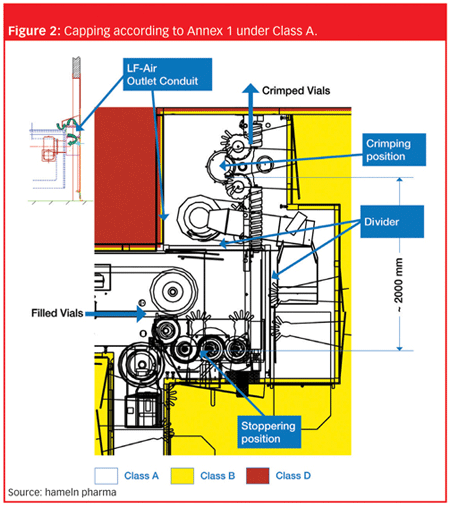An award-winning sterile facility: a case study
What makes a new sterile plant award winning?
What makes a new sterile plant award winning? Having scooped the international Facility of the Year Award 2009 in the Operational Excellence category, contract manufacturer, hameln pharma, is highly qualified to advise others. Pharmaceutical Technology Europe (PTE) spoke to Dr Simone Dahlmanns, Operations Director and head of the construction project at hameln pharma, and Christoph Kerstein, Managing Director and owner of the hameln group, for insight into the company’s new site’s features.
The goal
The company’s mission was to expand its capacity for sterile production and packaging by building a new sterile facility for the aseptic production of parenteral drugs that meets all international legal requirements, “not only EU, but also FDA, GMP and everything concerning safety, health and environment,” advised Dahlmanns. The facility was also designed to meet future market requirements, to extend production flexibility, to optimize all processes and to install efficiency. “It is important to include operational efficiency in the planning process. If you don’t, then you lose a lot of potential to optimize processes,” commented Kerstein.
Building a new facility, though, was going to have a regulatory impact on the marketing authorization; this impact had to be kept to a minimum.
SolutionsMarketing authorization
By creating a passageway linking the old and new buildings, and retaining the management and mailing address, hameln pharma found the path of least resistance.
Planning for the future
PTE asked Dahlmanns which future market requirements influenced the design of the facility. She told us: “We looked at the potential GMP trends. During the planning and building phases, Annex 1 was undergoing revisions: we could never have anticipated that the final version would be less strict than the last. Therefore, our design became a perfect solution, having capping in Class A as an aseptic process.”
The company considered other potential GMP trends, specifically, the ‘what’ and the ‘where’, “just so that we could organize the room concept and the HVAC concept to suit future requirements,” said Dahlmanns. She added: “The whole building can be added to and extended in four geographical directions, creating flexibility.” Depending on the ype and volume of future products, the company now has the option to produce it within the existing building or to add another.
The rate at which biotech products are coming out of development has fuelled Kerstein’s strong belief that within the next 5–7 years, hameln pharma will move into biotechnology. He told PTE that development activities drive their technology and product: “It’s unlikely that we start with the developed product — you have to start with the naked API and then develop that into a form; which form depends on whether it is a small molecule or a biotech product. Having a state-of-the-art sterile aseptic production facility means we are clearly capable of handling these products. If needs be, we can start with manufacturing biotech APIs and then do the fill-and-finish.”
Layout improves efficiency
The layout of the facility supports efficient flow of materials and personnel, including short routes and reduced intermediate storage (Figure 1). Furthermore, the sequence of individual production steps determines the work area layout. New filling systems have been installed in a U‑shape (Figure 2), which compared with previous linear configuration, has reduced required personnel by 33%. Kerstein explained how this is achieved: “If a filling line is linear, you need three personnel to operate the in-feed (Class D), filling (Class A) and out‑feed (Class D). By installing the filling line in a U‑shape, you only need one person to handle both the in‑feed and out‑feed processes, and one person on filling: this is an efficient set-up.”

hameln pharma has also managed to combine functionality and aesthetics. Colour‑coding the clean rooms (white for Class A; yellow for Class B; red for Class D) helps personnel to visualize clean room classes and guide them subconsciously throughout the facility.
Standardized processes
Where possible, rooms, systems, equipment, tools and processes have been standardized. “Standardization has boosted employee productivity, which has, therefore, increased the efficiency of the whole production process,” said Kerstein.

Drug Solutions Podcast: A Closer Look at mRNA in Oncology and Vaccines
April 30th 2024In this episode fo the Drug Solutions Podcast, etherna’s vice-president of Technology and Innovation, Stefaan De Koker, discusses the merits and challenges of using mRNA as the foundation for therapeutics in oncology as well as for vaccines.